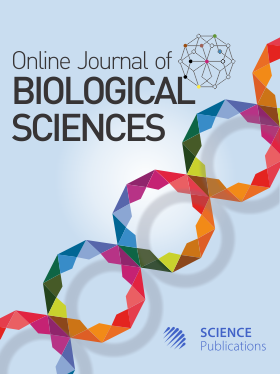Acaricidal Activity of Azadirachta indica (Neem Tree) and Carica papaya (Papaya) Leaf Extracts against Rhipicephalus sanguineus (Dog Ticks) Using Spray Method
- 1 College of Health and Sciences, University of Northern Philippines, Vigan City, Ilocos Sur, Philippines
Abstract
Ticks pose a serious threat to dogs, with synthetic acaricides leading to environmental impact and resistance concerns. While Azadirachta indica and Carica papaya have shown acaricidal potential against Rhipicephalus sanguineus, their efficacy against dog ticks has not been thoroughly investigated. This study determined the acaricidal activity of A. indica and C. papaya leaf extract against R. sanguineus, both individually and combined, to develop a botanical bio-agent that can be utilized as a substitute to the commercially available Permethrin. Each plant specimen was air-dried, pulverized, and extracted using 95% ethyl alcohol. Phytochemical screening tests were conducted to determine the bioactive components present in each plant extract. The analysis showed that the ethanolic extract of A. indica contains moderate levels of tannins, saponins, flavonoids, alkaloids, and glycosides, with a lower concentration of phenolic compounds. In contrast, the ethanolic extract of C. papaya has moderate amounts of tannins, flavonoids, and alkaloids, while saponins, glycosides, and phenolic compounds are present in lower concentrations. The spray method of acaricidal activity determination revealed that each plant extract has acaricidal activity, but a better effect against R. sanguineus was obtained if both extracts were combined. The A. indica and C. papaya combined leaf extract at 100% can be used as an acaricidal bio-agent against dogs’ ticks. For future directions of similar studies, it is recommended to prioritize refining bioassay methodologies and conducting in-depth chemical profiling. Exploring variations in extraction techniques, solvent types, and concentration gradients may offer valuable insights into the most effective formulations for tick control. In addition, the identification and quantification of major bioactive compounds that are responsible for acaricidal activity could be facilitated by the use of advanced analytical techniques, including Gas Chromatography-Mass Spectrometry (GC-MS) and High-Performance Liquid Chromatography (HPLC). This integrated approach would deepen our understanding of the mode of action, enhance efficacy, and contribute to the development of sustainable alternatives to synthetic acaricides.
DOI: https://doi.org/10.3844/ojbsci.2025.426.436

- 4,253 Views
- 1,590 Downloads
- 0 Citations
Download
Keywords
- Acaricide
- Carica papaya
- Azadirachta indica
- Phytochemicals
- Ticks
